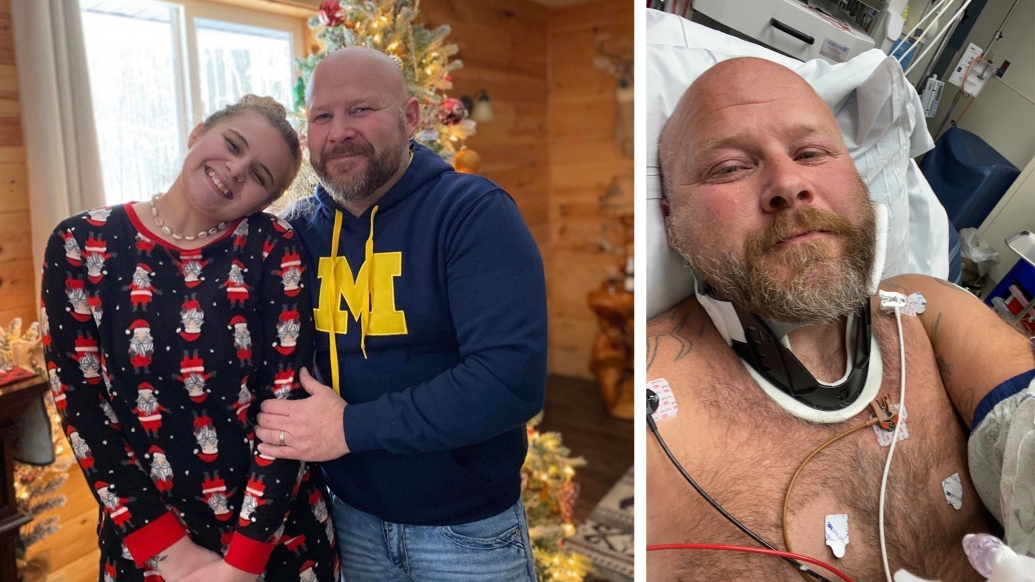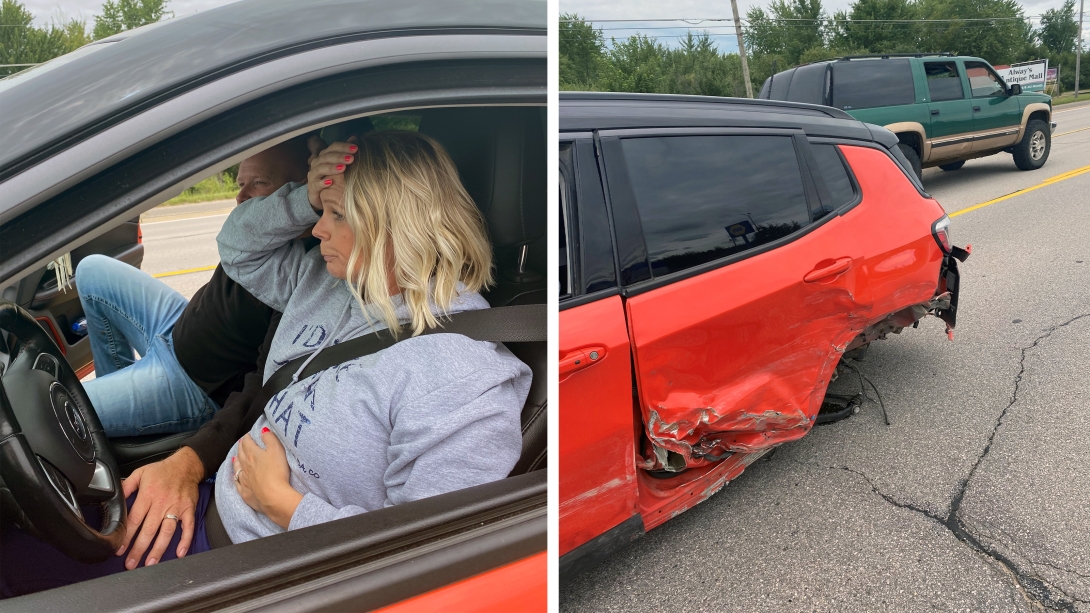A demand for training in spine endoscopy is rising in the United States
5:00 AM
Author |

After surviving a rollover crash due to an intoxicated driver in August 2022, a Michigan landscaper avoided paralysis – and a long, costly recovery – thanks to a minimally invasive spine surgery that is gaining popularity.
The car came from several lanes over. Ralph Moore, 42, remembers sticking out his arm to shield his wife before they spun out and flipped.
Allison Moore only suffered minor injuries, some whiplash and seatbelt bruising. But in the center of US-10 near Ludington, Mich., Ralph Moore felt numbness on the left side of his body. A disc that protects his thoracic spine had ruptured and entered his spinal canal.
“I couldn’t feel my leg and would fall when I tried to walk,” said Moore, who has owned a landscaping company in Hart, Mich., for 18 years. “Any time of the day, the pressure on my spine caused me to lose all power and feeling in my left side.”
Many patients with a herniated disc in their thoracic spine don’t require surgery and can instead be treated with rest, anti-inflammatory medications and physical therapy. But for Moore, the quickly worsening symptoms represented a ticking clock.
“Patients with this condition who go untreated with aggravating symptoms can progress rapidly,” said Osama Kashlan, M.D., a neurosurgeon at University of Michigan Health. “The thoracic spinal cord does not do well with pressure from the herniated disc. If Mr. Moore had waited longer, he could have been paralyzed.”

Moore sought several opinions from hospitals on the west side of the state before arriving at U-M Health. They all recommended the same surgery, a discectomy and fusion, to remove the ruptured disc. The two traditional methods for such a procedure involve either cracking open the ribs to move the lung and reach the spine, or to get access through a large incision in the back that requires screws and rods.
“They wanted to bust me open and cut it out, but I really did not want to be in a walker,” Moore said. “So, I went to get another opinion.”
After an evaluation at U-M Health, neurosurgeons saw Moore’s condition worsening and recommended the same operation. But before the procedure, a team member thought to connect with Kashlan, who, in 2018, spent time overseas learning a minimally invasive operation to treat the condition from which Moore suffered.
A less invasive surgical option
Spine endoscopy is not new outside of the United States. The procedure involves sticking a small scope through a sub-centimeter-long incision, using X-Ray to find the herniated disc and water to break up the pieces before removing them.
Research into thoracic spine endoscopy shows that it carries a high success rate with reduced morbidity compared to traditional approaches. At U-M Health, where he is currently training a second neurosurgeon to perform the operation, Kashlan says his endoscopy patients have faster recoveries and shorter hospital stays.
“Traditional methods see a recovery time of three to six months, and spine endoscopy can have patients feeling recovered in four to six weeks — sometimes as early as two weeks,” he said.
Endoscopy will one day be the standard of care in neurosurgery. There are so many potential applications with endoscopy beyond thoracic disc herniations.”
- Osama Kashlan, M.D.
As someone who spends his life and career moving, Ralph Moore was ready get up and walk out of the hospital the day after his procedure in December 2022.
SEE ALSO: Back Pain: A Thing of the Past (michiganmedicine.org)
“They told me four to six weeks, but I’m one of those people that always wants to do more,” Moore said. “I felt great – I would pick that over any surgery. Before this, I thought there was no way I could’ve continued in the landscaping business that I’ve owned for years.”
Gaining popularity
The successful operations and speedy recoveries for patients like Moore have Kashlan looking to the future for a procedure that is gaining popularity in the U.S.
“Endoscopy will one day be the standard of care in neurosurgery,” he said. “There are so many potential applications with endoscopy beyond thoracic disc herniations. It can be used to treat cervical disc herniations, any type of stenosis, certain nerve pain issues and, recently, spinal fusion. Soon the traditional methods will feel outdated in many of these conditions.”
The challenge of growing spine endoscopy: limited training opportunities. Kashlan is an instructor through one of the companies that supplies devices for the procedure. The demand for learning how to provide this type of care, he says, is steadily rising.
“I have a lot of colleagues in southeast Michigan who are waiting for me to be able to train them,” Kashlan said. “As soon as that happens, we will hopefully have a lot of surgeons in different health systems in the area who can serve this population. People all around the country are wanting to learn about spine endoscopy. I am blessed to have trained under giants in the field and am honored to spread this knowledge and skills to others all around the nation.”

Explore a variety of health care news & stories by visiting the Health Lab home page for more articles.

Department of Communication at Michigan Medicine
Want top health & research news weekly? Sign up for Health Lab’s newsletters today!





